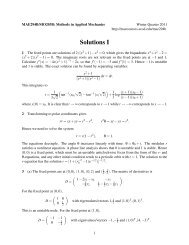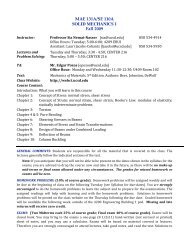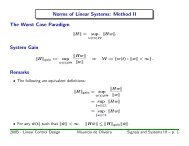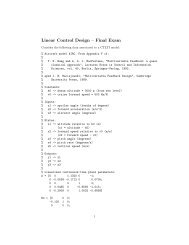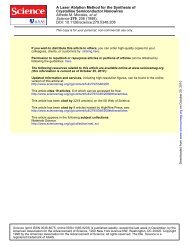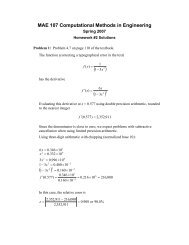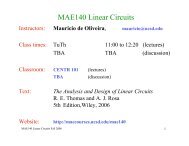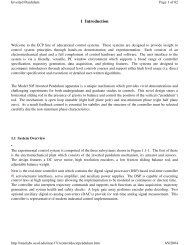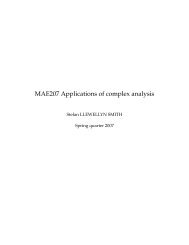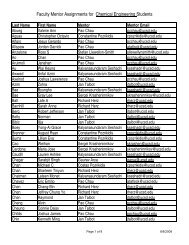solution
solution
solution
Create successful ePaper yourself
Turn your PDF publications into a flip-book with our unique Google optimized e-Paper software.
π<br />
ω p = 10 , a straight line (reference to log10 ω ) achieves the − phase change, as<br />
2<br />
shown (dashed line).<br />
jω<br />
π<br />
Similarly, for part , for low frequencies ( ω ω p 10 ) and 0 for high<br />
jω<br />
+ 10 2<br />
π<br />
frequencies ( ω 10ω p ), a straight line at ω p /10 < ω < 10ωp<br />
gives the − phase<br />
2<br />
change, as shown (dotted line).<br />
At last, applying composition rules to get the final phase asymptote, as shown (solid<br />
line).<br />
phase factor<br />
phase factor<br />
Code:<br />
2<br />
1<br />
0<br />
-1<br />
-2<br />
10 -1<br />
2<br />
1<br />
0<br />
-1<br />
-2<br />
10 -1<br />
10 0<br />
10 0<br />
omg = 0.1:0.1:1000;<br />
omg_p = 10;<br />
omg1 = 0.1:0.1:omg_p;<br />
omg2 = omg_p+0.1:0.1:1000;<br />
ym = zeros(size(omg));<br />
ym_1 = ones(size(omg1)); % get the magnitude asymptote for low frequency<br />
ym_2 = omg_p./omg2; % get the magnitude asymptote for high frequency<br />
ym(1:length(omg1)) = ym_1;<br />
ym(length(omg1)+1:end)= ym_2;<br />
10 1<br />
ω<br />
10 1<br />
ω<br />
10 2<br />
10 2<br />
10 3<br />
10 3



